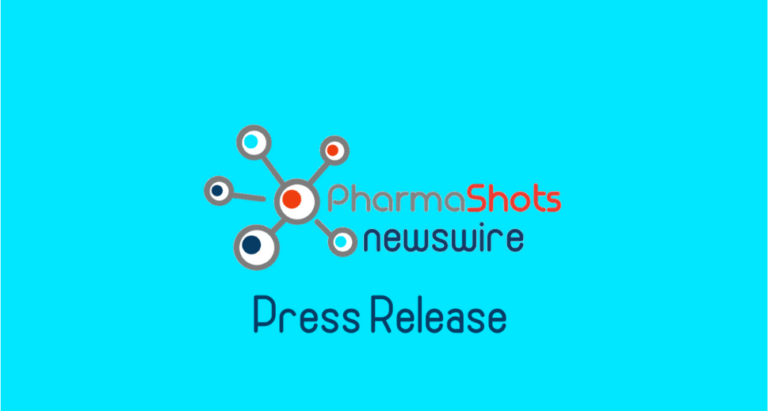REGENXBIO Announces Update on RGX-314 and Pivotal Program for the Treatment of Wet AMD and New Gene Therapy Program for the Treatment of Duchenne Muscular Dystrophy
 ROCKVILLE, Md.,?Jan. 5, 2021?/PRNewswire/ --?REGENXBIO Inc. (Nasdaq:?RGNX) today provided an update on the RGX-314 programs, including the announcement that the pivotal program for RGX-314 for the treatment of wet age-related macular degeneration (wet AMD) is now active. In addition, REGENXBIO announced a new program, RGX-202, a novel, potentially best-in-class, one-time gene therapy for the treatment of Duchenne Muscular Dystrophy (DMD).
"2020 was a very productive year at REGENXBIO, and we are excited to move into 2021, which we expect to be another year of clinical execution. The initiation of our first pivotal program for RGX-314 for the treatment of wet AMD is a great step forward for the field as we look to broaden the applicability of gene therapy to larger patient populations. In addition, we are excited to announce RGX-202, a potential one-time gene therapy for the treatment of DMD. RGX-202 is the first gene therapy program in the REGENXBIO pipeline to be developed under the leadership of our Chief Scientific Officer,?Olivier Danos. We look forward to filing an IND for this program later this year," said?Kenneth T. Mills, President and Chief Executive Officer of REGENXBIO. "We continue to advance our pipeline of innovative therapies in the clinic as well as our manufacturing capabilities. I would also like to express my deep gratitude to our employees and clinical partners as well as patients and their families for their ongoing commitment and support despite the challenges posed by the global COVID-19 pandemic."
Pivotal Program for RGX-314 for the Treatment of wet AMD
REGENXBIO today announced that ATMOSPHERE?, the first of two planned pivotal trials to evaluate RGX-314, is active and patient screening is ongoing. RGX-314 is a potential best-in-class, one-time gene therapy for the treatment of wet AMD.
REGENXBIO completed an End of Phase 2 meeting with the FDA to discuss the details of a pivotal program to support a Biologics License Application (BLA). Based on discussions with the FDA, REGENXBIO plans to conduct two randomized, well-controlled clinical trials to evaluate the efficacy and safety of RGX-314 in patients with wet AMD, enrolling approximately 700 patients total. In addition, REGENXBIO and the FDA aligned on a clear path to support manufacturing plans in the pivotal program. REGENXBIO expects to submit a BLA based on these trials in 2024.
"We are pleased to have reached alignment with the FDA on key elements of our pivotal program for the treatment of wet AMD. Our plan allows us to further accelerate the clinical development of RGX-314 towards the goal of a BLA filing in 2024 and we have already begun site activation and patient screening for our first planned pivotal trial," said?Steve Pakola, M.D., Chief Medical Officer of REGENXBIO. "We have strengthened the key design elements for the planned trials based on the long-term data from our dose-escalation Phase I/IIa trial of RGX-314 and believe that we are well-positioned to execute on this pivotal program."
ROCKVILLE, Md.,?Jan. 5, 2021?/PRNewswire/ --?REGENXBIO Inc. (Nasdaq:?RGNX) today provided an update on the RGX-314 programs, including the announcement that the pivotal program for RGX-314 for the treatment of wet age-related macular degeneration (wet AMD) is now active. In addition, REGENXBIO announced a new program, RGX-202, a novel, potentially best-in-class, one-time gene therapy for the treatment of Duchenne Muscular Dystrophy (DMD).
"2020 was a very productive year at REGENXBIO, and we are excited to move into 2021, which we expect to be another year of clinical execution. The initiation of our first pivotal program for RGX-314 for the treatment of wet AMD is a great step forward for the field as we look to broaden the applicability of gene therapy to larger patient populations. In addition, we are excited to announce RGX-202, a potential one-time gene therapy for the treatment of DMD. RGX-202 is the first gene therapy program in the REGENXBIO pipeline to be developed under the leadership of our Chief Scientific Officer,?Olivier Danos. We look forward to filing an IND for this program later this year," said?Kenneth T. Mills, President and Chief Executive Officer of REGENXBIO. "We continue to advance our pipeline of innovative therapies in the clinic as well as our manufacturing capabilities. I would also like to express my deep gratitude to our employees and clinical partners as well as patients and their families for their ongoing commitment and support despite the challenges posed by the global COVID-19 pandemic."
Pivotal Program for RGX-314 for the Treatment of wet AMD
REGENXBIO today announced that ATMOSPHERE?, the first of two planned pivotal trials to evaluate RGX-314, is active and patient screening is ongoing. RGX-314 is a potential best-in-class, one-time gene therapy for the treatment of wet AMD.
REGENXBIO completed an End of Phase 2 meeting with the FDA to discuss the details of a pivotal program to support a Biologics License Application (BLA). Based on discussions with the FDA, REGENXBIO plans to conduct two randomized, well-controlled clinical trials to evaluate the efficacy and safety of RGX-314 in patients with wet AMD, enrolling approximately 700 patients total. In addition, REGENXBIO and the FDA aligned on a clear path to support manufacturing plans in the pivotal program. REGENXBIO expects to submit a BLA based on these trials in 2024.
"We are pleased to have reached alignment with the FDA on key elements of our pivotal program for the treatment of wet AMD. Our plan allows us to further accelerate the clinical development of RGX-314 towards the goal of a BLA filing in 2024 and we have already begun site activation and patient screening for our first planned pivotal trial," said?Steve Pakola, M.D., Chief Medical Officer of REGENXBIO. "We have strengthened the key design elements for the planned trials based on the long-term data from our dose-escalation Phase I/IIa trial of RGX-314 and believe that we are well-positioned to execute on this pivotal program."
- ATMOSPHERE will evaluate the efficacy and safety of RGX-314 in patients with wet AMD.
- The trial will enroll approximately 300 patients across two RGX-314 dose arms versus ranibizumab. The primary endpoint of the trial is non-inferiority to ranibizumab based on change from baseline in Best Corrected Visual Acuity (BCVA) at one year.
- Site activation is ongoing and REGENXBIO expects to begin dosing patients in this trial in the first quarter of 2021.
- The second pivotal trial is expected to be similar in design to ATMOSPHERE and REGENXBIO plans to initiate the trial in the second half of 2021.
- The trial is expected to have two RGX-314 dose arms versus aflibercept, and the planned primary endpoint is non-inferiority to aflibercept based on the change from baseline in BCVA at one year.
- In addition, based on discussions with FDA, REGENXBIO believes it has a clear path to support cGMP commercial-ready manufacturing plans in the pivotal program.
- REGENXBIO has initiated its pivotal program using cGMP material produced from its existing manufacturing process and has agreement with the FDA to incorporate its scalable suspension cell culture manufacturing process to support future commercialization, upon completion of a bridging study and the pivotal trials. The bridging study is expected to initiate in the first half of 2021.
- REGENXBIO has completed enrollment of patients in Cohort 1 of AAVIATE?, a Phase II trial for the treatment of wet AMD.
- REGENXBIO plans to report interim data from Cohort 1 in the third quarter of 2021.
- Enrollment of patients in Cohort 2 is expected to begin in the first quarter of 2021.
- Enrollment of patients continues in Cohort 1 for ALTITUDE?, a Phase II trial for the treatment of DR. REGENXBIO expects to report initial data from this trial in 2021.
- As of?December 31, 2020, suprachoroidal delivery of RGX-314 in AAVIATE and ALTITUDE is reported to be generally well-tolerated, with no evidence of inflammation.
- RGX-202 is designed to deliver a novel microdystrophin transgene which includes an extended coding region of the C-Terminal (CT) domain found in naturally occurring dystrophin, as well as other fundamental improvements.
- Presence of the CT domain has been shown to recruit several key proteins to the muscle cell membrane, leading to improved muscle resistance to contraction-induced muscle damage in dystrophic mice.1
- Additional design features, including codon optimization and reduction of CpG content, may potentially improve gene expression, increase translational efficiency and reduce immunogenicity.
- RGX-202 is designed to use the NAV AAV8 vector, a vector used in numerous clinical trials, and a well-characterized muscle specific promoter (Spc5-12) to support the delivery and targeted expression of genes throughout skeletal and heart muscle.
- Proof of concept data from preclinical studies of RGX-202 in the?mdx?mouse model of DMD demonstrates broad and robust expression of microdystrophin in muscle, recruitment of key proteins to the muscle cells, improvements in muscle histology, as well as meaningful increases in muscle strength and function.
- Commercial-scale cGMP material has already been produced at 1000L capacity using REGENXBIO's suspension cell culture manufacturing process and will be used in the clinical development of RGX-202.
- Investigational New Drug (IND) application enabling studies are being completed and REGENXBIO expects to submit an IND to the FDA in mid-2021.
Investor Relations and Corporate Communications
347-926-7709
ttruehart@regenxbio.com Investors:
Eleanor Barisser, 212-600-1902
eleanor@argotpartners.com Media:
David Rosen, 212-600-1902
david.rosen@argotpartners.com 1?Koo, Taeyoung et al. "Delivery of AAV2/9-microdystrophin genes incorporating helix 1 of the coiled-coil motif in the C-terminal domain of dystrophin improves muscle pathology and restores the level of a1-syntrophin and a-dystrobrevin in skeletal muscles of mdx mice." Human gene therapy vol. 22,11 (2011): 1379-88. doi:10.1089/hum.2011.020 SOURCE REGENXBIO Inc.





